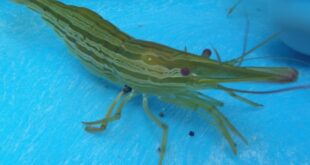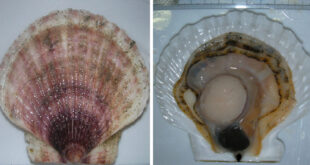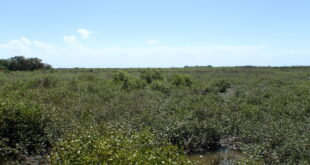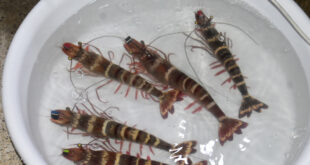By Development Communication Section
-

Former SEAFDEC Secretary-General Dr. Siri Ekmaharaj talks about the current tiger shrimp production techniques during his DKV lecture
High export demand for tiger shrimp prompted a Thai shrimp expert to encourage Southeast Asian countries, including the Philippines, to revive and improve the production of the prime commodity.
“The demand for big-sized tiger shrimp have been expressed by different countries including China and Japan,” said Dr. Siri Ekmaharaj, former Secretary General of SEAFDEC, as he explained what encouraged Thai shrimp farmers to improve the production of tiger shrimp.
Tiger shrimp production in Thailand increased up to 10,000 mt/year in 2016 and 2017.
“Now is the good time to [bring back] the culture of tiger shrimp which is the local species of the region,” Dr. Ekmaharaj said during his lecture entitled “Aquaculture of Black Tiger Shrimp (Penaeus monodon): Perspective and Future Direction,” wherein he presented the experiences and current success of the tiger shrimp industry in Thailand despite the threat of emerging diseases.
He also shared culture techniques in Thailand which he believes can prevent diseases and lead to successful production runs.
These include using disease-free broodstock, proper preparation of pond bottom, enough seawater to supply clean water to culture ponds, availability of auto-feeding machines to minimize nutrient wastes, and application of biosecurity measures. For stocking of shrimp fry, the stocking density commonly observed for PL 15-20 was 25-30 pieces per square meter.
Dr. Ekmaharaj was the lecturer during the 26th Dean Domiciano K. Villaluz Memorial Lecture which was part of SEAFDEC/AQD’s 45th Anniversary Celebration last 12 July 2018.
SEAFDEC/AQD is currently working on a program “Oplan Balik Sugpo” which aims to increase the production and strengthen the tiger shrimp industry in the Philippines.
 SEAFDEC/AQD Southeast Asian Fisheries Development Center | Aquaculture Department
SEAFDEC/AQD Southeast Asian Fisheries Development Center | Aquaculture Department



